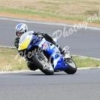Idle timing at +40 degrees!, WTF? and its not pinging!
Announcements
-
Similar Content
-
Latest Posts
-
By Mmcmasters · Posted
Drift car i can drive to the track and then drive home a nice cruise, also a nice summer daily driver when it's not raining due to no hvac in the car -
In many cases, aftermarket dump pipe inlet flanges don't properly align with the outlet of the turbine housing, as they were designed to fit within the constraints of a 3-inch pipe. When an oversized wastegate flapper valve is installed, it can interfere with the dump pipe flange. A bit of die-grinding usually resolves this issue. Additionally, the actuator must be preloaded, otherwise, the flapper valve may rattle. The stock wastegate also tends to open too early, so upgrading to a wastegate actuator with a stiffer spring can improve boost response.
-
By joshuaho96 · Posted
Are you referring to the common front u-joint + rear CV setup I see sold everywhere? I have a front + rear CV driveshaft on order but if this thing is going to bind I'm just going to leave it as shelf art.
-






Recommended Posts
Create an account or sign in to comment
You need to be a member in order to leave a comment
Create an account
Sign up for a new account in our community. It's easy!
Register a new accountSign in
Already have an account? Sign in here.
Sign In Now